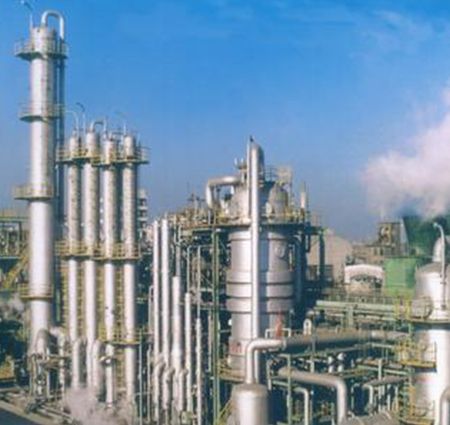
Yingkou Qingying Petrochemical Equipment Co., Ltd
Marketing department: manager Guo
Mobile: 18641771136
Purchasing department: Manager Zhu
Mobile: 13050617889
Address: No. 58, South Binhai Road, Xishi District, Yingkou, Liaoning, China
1. Cylinder body: The main pressure space required by the pressure vessel to store materials or complete chemical reactions is one of the most important pressure components of the pressure vessel. Pressure Vessel Equipment
The function of the cylinder is to provide the pressure-bearing space required by the process, and it is one of the most important pressure-bearing components of the pressure vessel. Its inner diameter and volume often need to be determined by the process calculation. Cylindrical cylinders (ie, cylinders) and spherical cylinders are the most commonly used cylinder structures in engineering.
When the diameter of the cylinder is small (generally less than 500mm), the cylinder can be made of seamless steel pipe, and there is no longitudinal weld on the cylinder; when the diameter is large, the steel plate can be rolled into a cylinder on a rolling machine or a steel plate can be used in a hydraulic press The upper is pressed into two semi-cylinders, and the two are welded together with welding seams to form a full cylinder. Since the direction of the weld is parallel to the longitudinal (ie, axial) direction of the cylinder, it is called a longitudinal weld, or longitudinal weld for short. If the diameter of the container is not very large, there is generally only one longitudinal weld; as the diameter of the container increases, due to the limitation of the size of the steel plate, there may be two or more longitudinal welds. In addition, a container with a shorter length can be directly connected to a head at both ends of a cylinder to form a closed pressure space, thus forming a pressure vessel shell. However, when the container is long, due to the limitation of the size of the steel plate, it is necessary to use the steel plate to coil and weld several sections of the cylinder (a section of the cylinder is called a cylinder section), and then make two or more cylinder sections. Assemble and weld into cylinders of desired length. The connection weld between the cylinder section and the cylinder section, between the cylinder and the end head, because its direction is perpendicular to the axial direction of the cylinder, it is called a circumferential weld, or a circumferential weld for short.
2. Head: effectively ensure the sealing, save materials and reduce the workload of processing and manufacturing;
The head refers to the element used to close the end of the container to isolate the internal and external media, also known as the end cap. The head of the cylindrical container is generally a revolving shell. According to the shape of the head surface, it can be divided into convex, conical, flat and combined. Convex head refers to the head whose outer surface is convex, such as hemispherical, elliptical, dish-shaped and spherical head without folding. Some gas cylinders use a combined bottom head with a convex inward, which can not only ensure the strength, but also meet the needs of safe use. 3. Sealing device: The reliability of the sealing device largely determines whether the pressure vessel is normal and safe. to operate;

4. Holes and nozzles: opening holes of various sizes or installing nozzles on the barrel or head of the pressure vessel, as well as installing pressure gauges, liquid level gauges, safety valves, thermometers, etc. requirements and maintenance needs.
The design of pressure vessel openings and nozzles is based on a large number of theoretical and scientific experimental research work at home and abroad. In recent years, most of the joints between the nozzle and the shell are subjected to local stress caused by external forces and external bending moments, using WRC Bulletin No. 107 method to calculate, and the key equipment also uses the finite element method to calculate the stress of each part in detail. Since the opening and the nozzle are the parts of the vessel with complex stress, many accidents originate in this part. 5. Support: the pressure vessel relies on The support supports and is fixed on the foundation.
6. Safety accessories: ensure the safe use of the pressure vessel and the normal process of the process.
Pressure vessel safety accessories refer to the accessory devices or instruments that ensure the safe operation of pressure vessels, including safety valves, bursting disc devices, pressure gauges, liquid level gauges and temperature measuring instruments. The selection of safety accessories for pressure vessels should be suitable for the medium and its working conditions, and the installation location should be convenient for inspection and maintenance.
The "Pressure Vessel Safety Technology Supervision Regulations" of the Ministry of Labor of my country stipulates that the pressure vessel safety accessories implement a regular inspection system, the safety valve is generally calibrated at least once a year, and the rupture disc is regularly replaced according to the actual use; The regulations of the design department; the regular maintenance system is implemented for the liquid level gauge; the temperature measuring instrument or thermometer must be installed on the pressure vessel that needs to control the wall temperature, and it should be checked regularly.